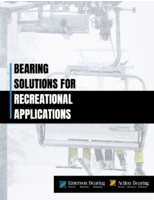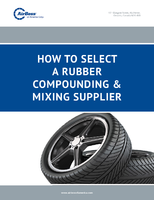Software performs design space exploration.
Share:
Press Release Summary:
LMS OPTIMUS v3.1 solution for computer-aided optimization and design-space exploration offers features to capture, optimize, and automate computer-aided design and engineering processes. It works with CAE software programs, and employs analysis methods to automatically identify design sensitivity to range of parameters. Software includes 3DScatter Plots, Correlation Scatter Plots, and Interactive Section Plots.
Original Press Release:
LMS Releases OPTIMUS Rev 3.1
New Features For Simulation Process Automation and Design Space Exploration
LMS has released version 3.1 of LMS OPTIMUS, its solution for computer-aided optimization and design-space exploration. OPTIMUS now has enhanced features to capture, optimize and automate computer-aided design and engineering processes. OPTIMUS works with all major mechanical CAE software programs (structural, dynamics, CFD, crash, acoustics, fatigue, etc.). New analysis methods enable the user to understand how changes affect their designs, and to automatically identify the design's sensitivity to a range of parameters. Enhanced graphical interactivity in OPTIMUS 3.1 optimizes its capabilities for design space exploration.
LMS customers already cited ease of setup as one of the most attractive features of OPTIMUS in capturing and optimizing simulation processes. The input/output process and simulation flow is defined using a straightforward flow chart that shows everything at a glance. In OPTIMUS 3.1 setup gets even easier. Customers can store complete projects and launch everything from the Windows desktop. The new template allows users to work with a pre-defined workflow. The input/output process now handles output vectors instead of just single points one at a time: customers can process the array of vectors in every way imaginable to define the optimization targets.
As designs are pushed to the edge, the margins of error could overlap with the inherent variability always present in design. The new OPTIMUS Robust Design Module allows customers to consider variability in the optimization process, in a design for six-sigma approach. Now, instead of considering the beginning and end of the optimization process as distinct points, they will be derived from a multi-dimensional cloud of points that address system variability. A typical application would be for crash, where the angle of the impact wall (and other design and test parameters) can be now described as a Gaussian distribution instead of a single value. As optimization converges over time, the spread of the points becomes narrower. A new Response Surface Methodology, RSM, is also included. By investigating the form and coefficients of the RSM (rather than just the values of the coefficients) this method allows customers to make more accurate decisions using the same number of design points.
OPTIMUS Rev 3.1 includes many new ways to perform design space exploration. New graphics include 3DScatter Plots for displaying the cloud of points rather than just the fitted RSM. Correlation Scatter Plots show all of the input/output relationships in one shot. Interactive Section Plots display n-dimensional response surfaces in one window - customers can perform optimizations by scrolling along one design parameter and see the effect on all others. Finally, users can now monitor, investigate and interact with the exploration process online.
LMS OPTIMUS is already the preferred optimization and design space exploration tool at major companies in manufacturing industries, among them BMW, Bosch, Daihatsu Motor, EADS, Federal Mogul, Ford, Freightliner, Kawasaki, Michelin, Olympus Opitical, Opel, Philips, Ricardo, Seiko Epson, Sanyo, The Aerospace Corporation, Toyota and Volkswagen.
About LMS International
Headquartered in Leuven, Belgium, LMS International provides solutions for functional performance engineering in mechanical product development. The company's CAE software, testing systems, and decision support infrastructure allow engineering teams to refine designs based on dynamic behavior such as motion, ride, handling, structural integrity, vibration, acoustic, NVH, and fatigue lifetime. These capabilities enable users to understand and solve dynamic problems, turning upfront attribute optimization into a strategic competitive advantage. The LMS solutions are process-centric within the digital development environment and deliver enterprise-wide productivity throughout the development process. Through its Engineering Services Division, LMS also provides vehicle development support from overload contracting and troubleshooting, technology transfer, up to co-development projects. LMS is certified to IS09001 quality standards, and employs over 550 people in 16 subsidiaries around the world.
www.lmsintl.com




